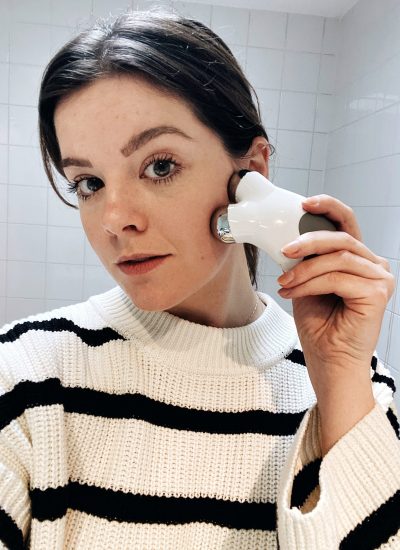
Earlier this year, I wrote this post about finding myself after more than twenty years as competitive figure skater. It wasn’t easy to learn who I was after spending my entire life defined as a figure skater. But something else that I’ve had to learn is to redefine my body acceptance as a retired athlete.
We love to talk about athletes and their bodies on the regular. We talk about Serena Williams’ body after returning from her pregnancy. ESPN even has an entire issue dubbed the Body Issue. When it’s in a positive light, I definitely think we should talk about athlete’s bodies. What the human form can do and how strong it can be should be celebrated.
But what we don’t talk about is body acceptance as a retired athlete. When the hours and hours of training are over, your body goes through so many changes. Often ones you didn’t expect. And there’s very little dialogue around that.
As a competitive ice dancer, you experience more pressure than normal on your body. The entire sport is about appearances, about creating beautiful pictures out on the ice. I was lucky to have amazingly supportive coaches who wanted me to be healthy and in the best shape I could be.
But that doesn’t mean that I had body acceptance when I was a competitive athlete. I was always striving to be better, slimmer, more fit. But the truth is when you’re training at such a high level, so much of that comes naturally. More than four hours of intense physical activity, six days a week, will change your body no matter what. Combine that with a diet high in protein, and your body becomes lean and muscular.
During my final year of training, I dropped 12 pounds from my already lean frame. I felt good, and I felt strong. I was so proud of that body that I had made. The body that allowed me to perform at such a high level in the sport that I loved.
My partner ended up quitting on me immediately after competing at the U.S. Championships. So I was faced with not only redefining who I was, but also redefining my body acceptance as a retired athlete. Though I stayed slim and active for several months, the pounds started to creep back on.
I’ve struggled to find something to replace the hours I spent training on the ice. Over the few years since my retirement, I’ve obsessively taken spin classes, barre, yoga, and boxing. I’ve yo-yo dieted like you wouldn’t believe. All in an attempt to find the body that I once loved so much.
But the truth that I’ve come to accept is that I’ll never have that body again. The only way you can get a body like that is hours upon hours of training every day. And that doesn’t fit into the life of a “regular” person with a full-time job.
Now, at 26 I’m starting to learn what body acceptance as a retired athlete means. It means accepting that your body will change. That you won’t have the strength that you used to. Or even the bruises and the calluses that acted as proud reminders of the rigors of training. It means working every day to find a healthy relationship with food. And it means finding a physical activity that you love in order to fill some of the void left by your sport.
I’ve recently been putting in extra time to become a spin instructor – a path not uncommon for retired athletes who feel that need to be active regularly. And I have to admit that the changes I’m noticing in my body from just an hour or two a day are making me so happy. But this time, I’m not happy because I’m getting thinner. I’m happy because my body is getting stronger.
It took me almost three years to learn what body acceptance as a retired athlete means. And I still struggle with it from time to time. I miss what my body used to do.
But I’m accepting these changes and learning to appreciate what my body was capable of in the past.
And what it’s capable of now.








